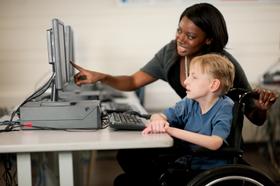For the 2025-26 school year, there is 1 public preschool serving 205 students in Coos Bay SD 9 School District. This district's average pre testing ranking is 6/10, which is in the top 50% of public pre schools in Oregon.
Public Preschool in Coos Bay SD 9 School District have an average math proficiency score of 32% (versus the Oregon public pre school average of 34%), and reading proficiency score of 47% (versus the 42% statewide average).
Minority enrollment is 27% of the student body (majority Hispanic), which is less than the Oregon public preschool average of 52% (majority Hispanic).
Overview
This School District
This State (OR)
# Schools
9 Schools
91 Schools
# Students
2,965 Students
29,714 Students
# Teachers
160 Teachers
1,885 Teachers
Student-Teacher Ratio
19:1
19:1
Student By Grade
District Rank
Coos Bay SD 9 School District, which is ranked within the bottom 50% of all 185 school districts in Oregon (based off of combined math and reading proficiency testing data) for the 2022-2023 school year.
The school district's graduation rate of 82% has increased from 65% over five school years.
Overall District Rank
#130 out of 187 school districts
(Bottom 50%)
(Bottom 50%)
Math Test Scores (% Proficient)
21%
31%
Reading/Language Arts Test Scores (% Proficient)
38%
44%
Science Test Scores (% Proficient)
24%
30%
Graduation Rate
82%
81%
Students by Ethnicity:
Diversity Score
0.46
0.67
% American Indian
3%
1%
% Asian
1%
5%
% Hispanic
14%
30%
% Black
1%
6%
% White
72%
48%
% Hawaiian
n/a
1%
% Two or more races
9%
9%
All Ethnic Groups
District Revenue and Spending
The revenue/student of $16,868 in this school district is less than the state median of $18,279. The school district revenue/student has stayed relatively flat over four school years.
The school district's spending/student of $24,973 is higher than the state median of $19,325. The school district spending/student has stayed relatively flat over four school years.
Total Revenue
$50 MM
$9,902 MM
Spending
$74 MM
$10,468 MM
Revenue / Student
$16,868
$18,279
Spending / Student
$24,973
$19,325
Best Coos Bay SD 9 School District Public Preschools (2025-26)
School
(Math and Reading Proficiency)
(Math and Reading Proficiency)
Location
Quick Facts
Rank: #11.
Lighthouse Charter School
Charter School
(Math: 30-34% | Reading: 45-49%)
Rank:
Rank:
7/
Top 50%10
62858 Hwy 101
Coos Bay, OR 97420
(541) 751-1649
Coos Bay, OR 97420
(541) 751-1649
Gr: PK-8 | 205 students Student-teacher ratio: 16:1 Minority enrollment: 27%
Recent Articles

10 Advantages of Public Education in 2025
Explore 10 key benefits of public education in 2025, with fresh statistics, expert insights, and real-world examples for parents and educators.

COVID-19’s Lasting Impact on U.S. Public Schools (2025)
Explore how COVID-19 continues to affect U.S. public schools in 2025: learning losses, enrollment shifts, mental health, and recovery strategies.





